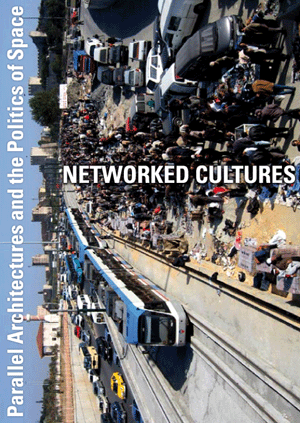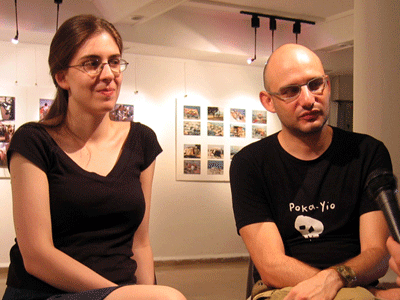_loginregistrieren_database_5 Factories - Worker Control in Venezuela Dario Azzellini & Oliver Ressler _ALMOSTREAL ECF _AnArchitektur Jesko Fezer _Arizona Road Azra Aksamija _Balkan Konsulat rotor _Bata-ville: We are not afraid of the future Nina Pope + Karen Guthrie / www.somewhere.org.uk _Black Benz Race krcf in collaboration with Felix Stalder, Arben Gecaj, Faton Topalli and Osman Osmani _Black Sea Files Ursula Biemann _Camp La Jolla Military ParkOwen Mundy _CHANGE REALITY: Renaming the Streets of Zagreb REINIGUNGSGESELLSCHAFT _Conceptual Paradise. There is a place for sophistication Stefan Roemer _de-regulation Irit Rogoff, Kutlug Ataman, Stefan Roemer_news ____________Bloomberg SPACE, London ____________Kumu Art Museum Tallinn ____________Open Space, Open Systems - Vienna ____________CAA 2011 Conference, New York ____________Forum Stadtpark, Graz ____________Symposium, Istanbul ____________lungomare, Bozen/Bolzano ____________Metropolis Biennale 2007-17, Copenhagen ____________new publication available now ____________Mestna Galerija, Ljubljana ____________Livestream of Networked Cultures documentary ____________ |
_ConversationsDespoina Sevasti and Poka-YioA-Station
Despoina Sevasti Poka-Yio
PM/HM: You’re both artists committed to creating platforms for experimental cultural investigations. What were your motivations for engaging yourselves in projects like A-Station and in which way did this engagement provide a framework for curating the recent exhibitions Suburbia – the Vast Cityscape of the Athenian Suburbs and Scan Istanbul – Suburbs of a 21st Century Metropolis? Poka-Yio: A-Station is a small independent art organisation, an art centre, based in Athens. It started as an initiative of artists and theorists, because there were no public spaces or initiatives here that allowed for experimenting, gathering information, creating research projects or networking between different disciplines such as the fine arts, architecture and cultural studies. Our primary interest in A-Station was to put on regular exhibitions. Though from the beginning we said we wouldn’t exhibit there as artists ourselves and we didn’t, for instance, want to present “traditional” group shows. Instead we hoped to create a space that would focus primarily on gathering information and lead to art production. Suburbia was a first attempt to work in this multidisciplinary way with architects, photographers, artists, people from various institutions and disciplines on the chaotic imagery and unsaid history of the vast cityscape of Athenian suburbs. We aimed at concentrating more on a theoretical survey about the suburbs of Athens than just compiling an exhibition on them. This investigatory principle led to our experimenting and working in workshops, and this resulted in a kind of melting pot of different people. It’s an approach that gives a broader insight into things you don’t normally expect to see. Until Suburbia, Athens had virtually gone unnoticed in contemporary fine arts. The dirty ground-level approach to a city bursting with energy was just not there. So we created this exhibition and it actually produced the know-how subsequently used for the Scan Istanbul project. Despoina was part of Suburbia and then took over, together with Oguz Icsoz, the Turkish curator, to create the project. Despoina Sevasti: Scan Istanbul is a collaboration between Greek and Turkish artists, architects, photographers and theorists. We worked with the Greek participants based on the Suburbia model before leaving Greece. And then, as soon as I arrived in Istanbul, we did preparatory work with the Turkish participants. In fact, work began about three months before the actual workshop. Though I think the whole procedure actually started when people first met. For even if we tried to give them theoretical feedback from our experiences in Athens – to make a bibliography and so on – it was mostly personal contact and collaboration that led to ideas. In the beginning it was a bit bizarre, because it was the first time young Greek and Turkish artists, architects and urban planners had met in a workshop, and the approach we adopted was quite unknown to many of the participants. So at first people were rather stunned by it all. I’d been going to Istanbul for eight years already and had thought it would be much easier, but it took some time to break the ice, though, of course, this process was very interesting in itself. PM/HM: In terms of producing a research archive and making it available through artistic work, e.g. in an exhibition, what was your particular motivation for expanding your field of engagement from Athens to Istanbul? Poka-Yio: There was the personal interest of Despoina and Oguz Icsoz, but apart from that you should know that in Greece we don’t usually see Istanbul as a city that exudes anything futuristic, yet this is exactly what it does. As soon as we arrived, we understood that something clearly futuristic was happening right there in front of our eyes, and we wanted to understand it and explore it, because this might be what the future would be like in many places, even Europe. There’s massive immigration to Istanbul and, since it’s all taking place within the country’s own borders, it’s leading to a violent overturn of both the urban and social fabric. This means class struggles within the city are in a constant state of flux. All these phenomena are fascinating for us as artists who live in a kind of glasshouse. PM/HM: The works produced in these workshops touch upon a whole array of public fantasies and hopes about Europe, hopes about urban futures. In what way does such an approach implicate art as an agent in a political process? Poka-Yio: This is an extremely sensitive matter. Since the beginning of A-Station, we’ve had this issue, whether we should intervene in things or use a more passive approach. We don’t want to glorify anything, nor do we want to reveal anything, or find the skeletons hidden in Istanbul’s closet. That’s not what we’re after. What we want is a small shift away from the (art) tourist’s eye – which only focuses on the spectacular historical components of the city –towards the less prominent “underground” differences that make Istanbul what it is. These are, of course, subtle differences. For instance, we all witness women with scarves, but the slight differences in the semiotics of their variation – that’s what’s really interesting. Despoina Sevasti: This particular subject is very important here in Istanbul, but no one seems to talk in depth about the real issue. It’s always either women with scarves or women without them, but the entire issue is actually much more complicated. There was one Greek artist, Victoria Karvouni, who wanted to explore the different sorts of scarves women wear; for her it was about investigating the cultural differences within this phenomenon. Not all scarves are the same. Scarves have all kinds of social connotations and a variety of semiotics. She’d already done a similar work in Athens, about haircuts. We knew from the beginning that not everyone would welcome this project. Everyday hundreds of people passing by on Istiklal Street would come in and say: “What’s this? This isn’t art – and, what’s more, we don’t like these people.” And: “Why are you presenting such an image of our city?” Yet at that very moment, women with scarves were inside the gallery or right outside on the street. This is a very important aspect: once you leave the art community, you get completely different reactions to what we call “art”. People can rediscover the city through such a research archive and discover completely different things based on the raw, untouched material on display. Poka-Yio: As I said, artists and curators are always tempted to glorify, because there are so many things that can produce a spectacular show. Especially in Istanbul, as the cityscape generates very strong images. So I think there’s always a temptation to create an exhibition that might be overwhelming, even though it wouldn’t do justice to what it developed from originally. From the start we said our exhibitions weren’t to be as spectacular as the usual visual art shows, because this wasn’t the point. We don’t need to reveal everything to the spectators of an exhibition. We should just show them a web of circumstances and let them navigate a way in and out themselves. It’s simple to pick five or ten images, or four or more videos, and make people say: “Wow!” And it’s easy to create a metaphor with such material – or to transform it into something else. But, like I’ve said, that’s not the point. We just want to bring raw material to the foreground, and then let researchers, architects, artists and gallery audiences find their way through it on their own.
|
_broadcasts_conversations+ Ana Dzokic and Marc Neelen+ Ayreen Anastas and Rene Gabri + atelier d'architecture autogérée (aaa) + Asya Filippova + Sophie Hope and Sarah Carrington + Branca Curcic + Christoph Schaefer + Campement Urbain + Claudia Zanfi + Despoina Sevasti and Poka-Yio + Erden Kosova + Helmut Batista _textsRadio as Spatial Practiceby: Paulo Tavares Survival Kits: Artistic Responses to Globalizationby: Marga van Mechelen What Ever Happened to Cultural Democracy?by: Sophie Hope I don't know how to explain ...by: Anca Gyemant Trading Placesby: Peter Moertenboeck & Helge Mooshammer Milosevic as Architectby: Srdjan Jovanovic Weiss When the Unavoidable Knocks at the Door ...by: Gulsen Bal Tracing Translocality: The BlackBenz Raceby: Felix Stalder travelling lexicon towards a global positioning systemby: Celine Condorelli |
